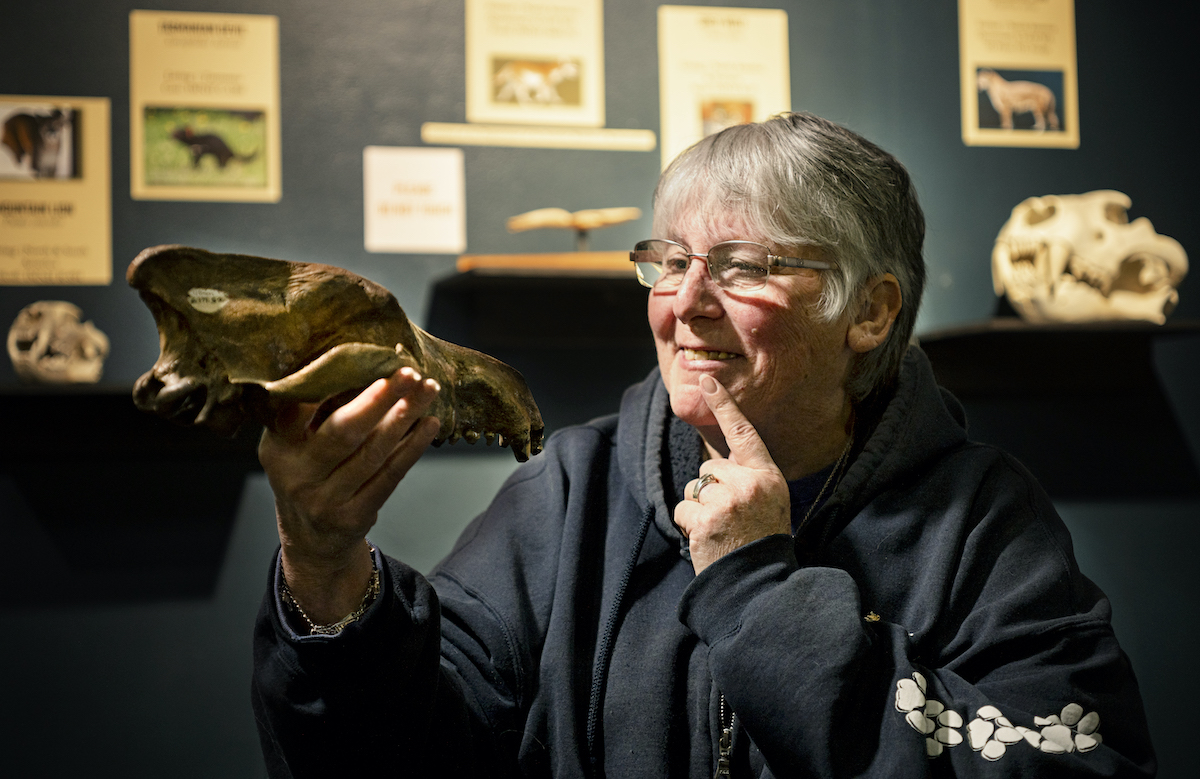Unlocking the Secrets of the Dire Wolf
February 9, 2021

Dr. Mary Thompson jokes that one of her first words was “fossil.” When other girls were playing with dolls, she was out collecting rocks and searching for ancient bones.
Decades later, it’s evident that her passion hasn’t changed as she shows off the Idaho Museum of Natural History’s nearly perfect skull of a Dire Wolf, an ancient giant wolf-like creature made famous by the hit series Game of Thrones.
“This is the best specimen in Idaho,” the researcher and retired museum collections manager says, holding up the skull.
The skull has been housed at the museum since the 1940s, but it was only recently that the remnants of the hulking beast received international recognition. A multidisciplinary study conducted by researchers from around the world, including Thompson, found that, although the dire wolf shares many characteristics with the modern gray wolf, it might not have actually been a wolf at all, but the last of its lineage.
The knowledge that prompted this discovery came from a tiny bone near the ear canal in the dire wolf skull. Scientists were able to collect DNA from the skull and other specimens, and compare it to DNA from the gray wolf.
Previously, Thompson says, scientists were able to make educated guesses about ancient animals based solely on looking at skulls and other fossils. Today, by extracting DNA, they are able to make discoveries that were not possible before, and find new questions. Today, for example, scientists know that dire wolves likely originated in North America, unlike the gray wolves, who originated in Europe and Asia. Now, they want to answer more questions, such as why gray wolves survived, but dire wolves didn’t, and how their new knowledge could change what they know about life in North America during the ice age.
That quest for even more knowledge is one of the reasons museum collections are so important, Thompson says. The dire wolf skull is one of many of the museum’s more than 1 million specimens currently being used for research — many of the fossils have been carefully stored for more than 50 years in the museum’s archives, waiting for new technology to unlock their secrets.
“Collections and museums are extremely important to creating this knowledge,” Thompson says.
Categories:
